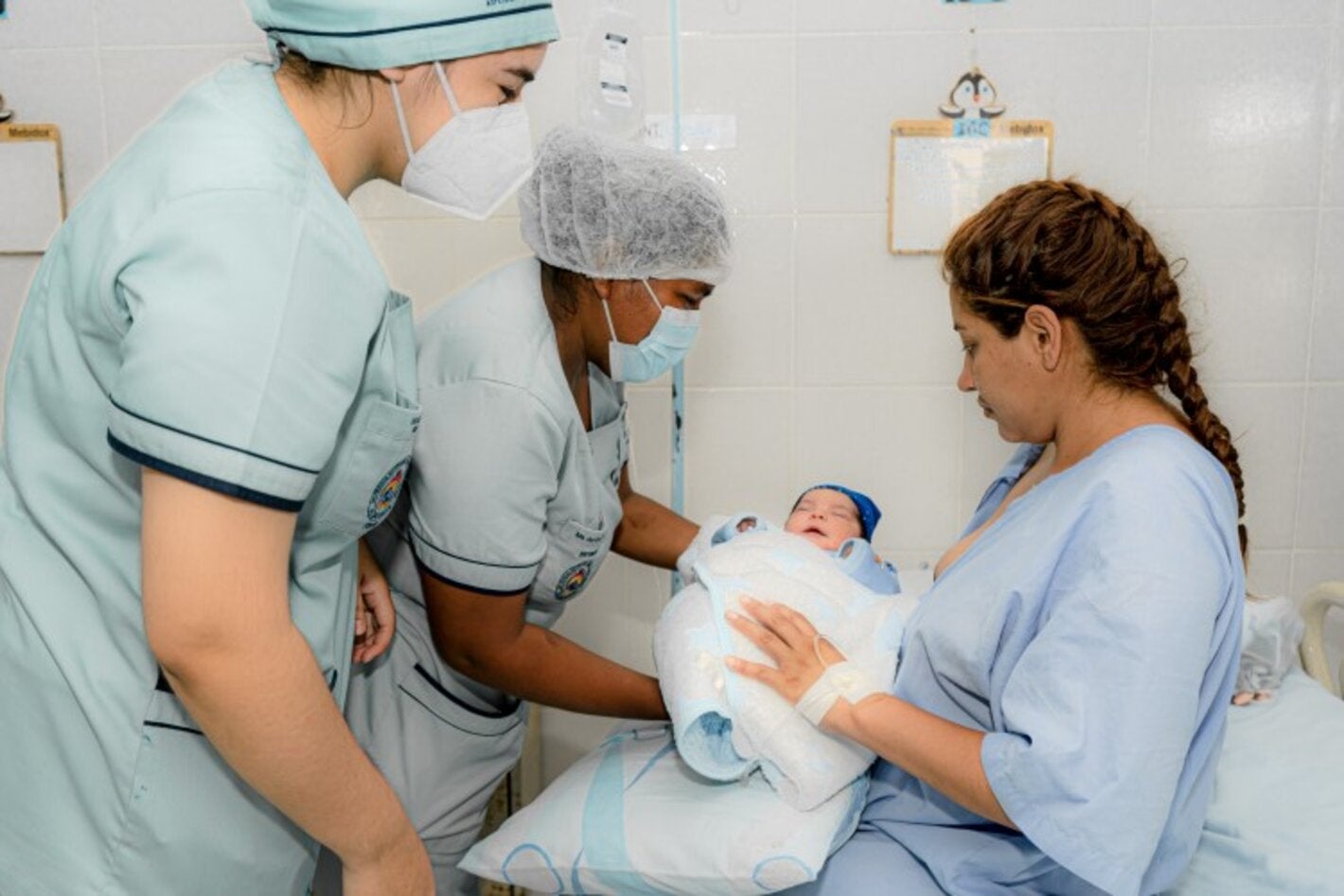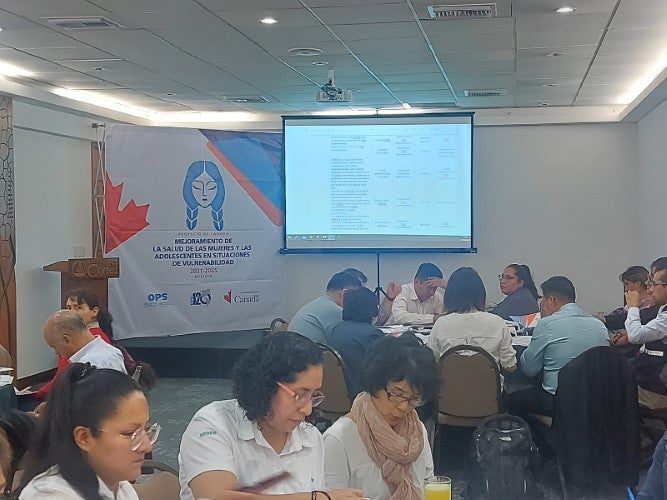
Santa Cruz de la Sierra, May 31, 2023 - Approximately 45 Bolivian health professionals from the country's nine departments, from second and third level health facilities, Departmental Health Services (SEDES) and the Ministry of Health and Sports (MSyD) participated in the workshop to validate the new Maternal Morbidity and Mortality Surveillance standard. This is expected to enable the country to implement new methodologies to improve maternal mortality data by reducing underreporting through the Intentional Search and Reclassification of Maternal Deaths (BIRMM, for its acronym in Spanish), a methodology implemented in several countries and with at least 20 years of experience in Mexico.
The workshop was held in the city of Santa Cruz as part of the actions of the Improving the Health of Women and Adolescents in Situations of Vulnerability project, funded by Global Affairs Canada and implemented by the Pan American Health Organization/World Health Organization (PAHO/WHO).
The participation of outreach workers was important, not only because their presence not only validated the standard, but also because, essentially, the inputs provided will serve to improve the entire system for surveillance of maternal death and extreme maternal morbidity.
The new standard offers an ostensible qualitative improvement because it incorporates near miss or extreme maternal morbidity as part of the surveillance system, thus including a process that "rescues" the good practices implemented in health facilities that have saved the lives of pregnant women at high obstetric risk. These good practices will be systematised through established information systems that will allow the replication of successful experiences in health facilities, helping to improve the country's health system.
The Maternal Death Ratio (MMR) in Bolivia remains one of the highest in the Americas region, despite the fact that the country officially reduced its maternal mortality ratio from 390 (ENDSA, 1994) to 160 (Ministry of Health, 2016) per 100,000 live births. For 2017, it was estimated at 155 per 100 000 live births, a reduction of 53.2% from the value estimated for 2000.




